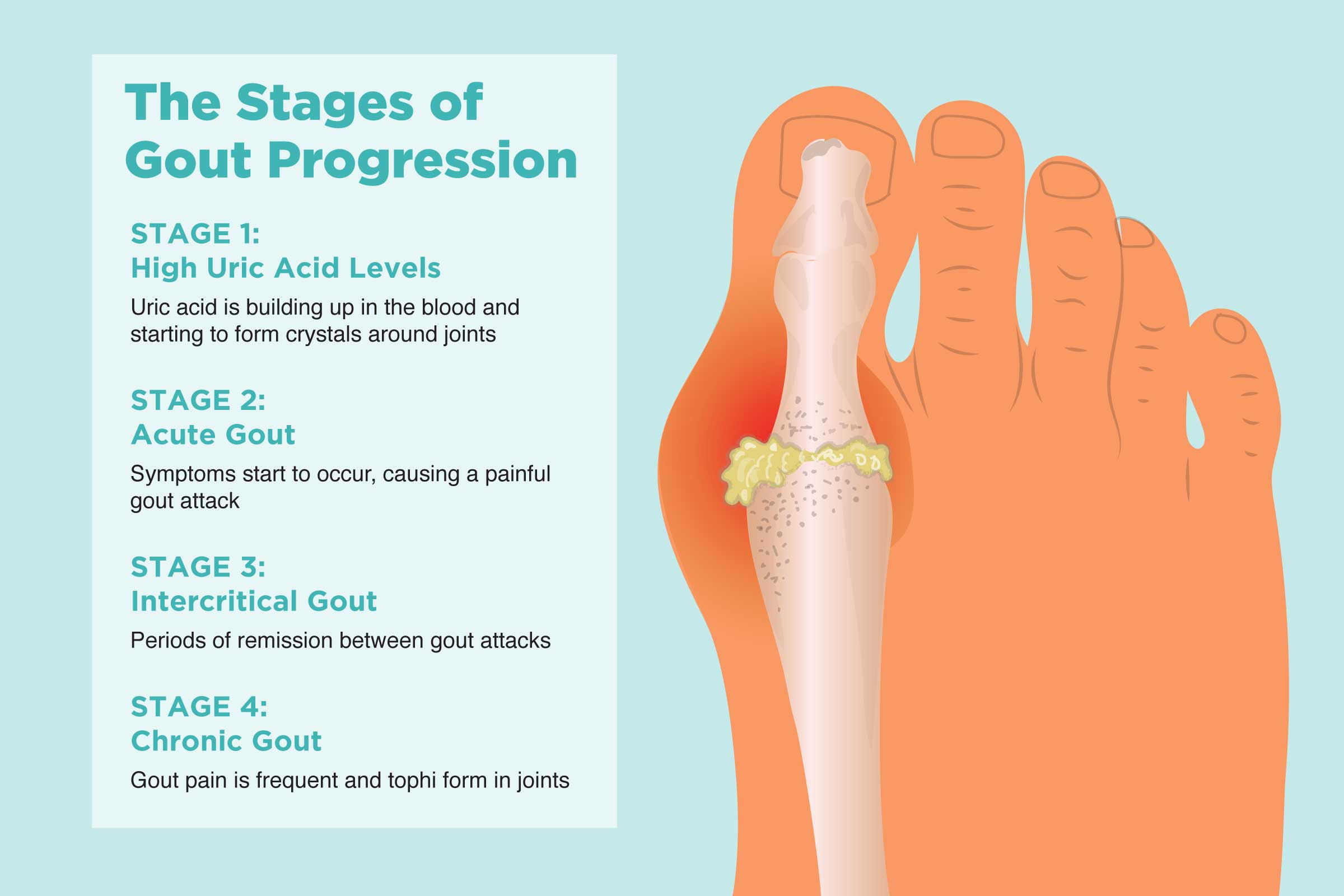
Gout
A painful kind of arthritis called gout is brought on by crystals of uric acid that build up in and around the joints.
It is the kind of inflammatory arthritis that is most prevalent. Men are more likely to get it, and as you age, your chances of getting it increase.
Overview
An excessive amount of uric acid accumulates in the blood and causes gout. Subsequently, this uric acid crystallizes into tiny particles that exit the circulation and settle in soft tissues like joints. In the joints, these microscopic crystals resemble grains of sand, impairing the smooth range of motion and producing discomfort and inflammation.
Uric acid crystals cause your body to react as though they were bacteria or an alien object. Inflammation results from the delivery of white blood cells and other immune-fighting cells to the area. This response can resemble an infection: redness, swelling, heat, and extreme tenderness will all appear in the affected area.
Causes
Gout typically strikes men between the ages of 30 and 45 and women between the ages of 55 and 70 after menopause. When your body does not get rid of enough uric acid or produces too much of it, gout may develop.
Some other risk factors may include
Consuming a lot of purine-rich foods such as red meat and certain fish varieties such as tuna sardines and scallops.
Eating and drinking foods and beverages sweetened with high-fructose corn syrup or consuming large quantities of alcohol, particularly beer.
Gout in the family history.
Chronic illnesses such as diabetes obesity or renal or cardiac disease.
Use of blood pressure-lowering drugs, beta-blockers, and diuretics.
Imbalance of the gut microbiome causes decreased immunity.
Symptoms
A gout attack causes the afflicted joint to become: extremely painful, tender red, hot, and swollen. As the attack settles, the skin over the joint may peel off, giving the appearance of shine. Attacks typically start fast and frequently happen at night. Physicians refer to the abrupt onset of symptoms as "acute."The attack can last longer, but it usually ends after five to seven days.
Gout attacks may increase in frequency and spread to new joints if untreated. Attacks usually begin in the wee hours of the morning and target the joint at the base of the big toe. The symptoms appear rapidly. Usually, they get worse in the first 12 to 24 hours after you realize it. Pain can be excruciating even from light contact with the affected joint; the weight of a bedsheet or a pair of socks can be excruciating.
Ayurvedic View
Vata rakta- Causes such as excess consumption of lavana rasa (salty taste), amla rasa (sour taste), katu rasa (pungent tasting food), kshara (alkaline food), ushna (hot), snigdha (unctuousness) and oily food, ajeerna (indigestion), intake of dadhi, etc, by sukumar (delicate, weak body) individual, causes aggaravation of vata dosha, rakta (vitiation of blood). This vitiated rakta obstructs the path of vata, once both of these aggravated and vitiated dosha reach the foot region, along with kapha and pitta dosha involvement will cause gout. Each dosha involvement will have a peculiar symptom, which appears first in paada angushta parva sandhi (small joint of the foot) resulting in pain, swelling, etc. Ayurveda's approach is to bring dosha back to prakruta awastha (balanced state), in sthana (place), guna (quality), karma (function), reduce the symptoms and rehabilitate the affected joint and correct the deformity by ayurvedic panchakarma treatment.
Ayurvedic Treartments
Snehanam Bashpa Swedanam Upanaham Avagaham Agni karma Churna pinda swedanam Pinda swedanam Lepanam
Naturopathy Treatments
Enema Manipulative therapy Sun bath Steam bath Arm & foot bath Mud therapy Packs Reflexology Acupuncture Hijama therapy Moxibustion Diet therapy Clinical yoga Pranayama
Gout
Treatment for
DISCLAIMER: Listed treatment details are only for information purposes. Treatments and duration may vary depending on numerous factors. Treatments for your condition may not be limited to this list.






















